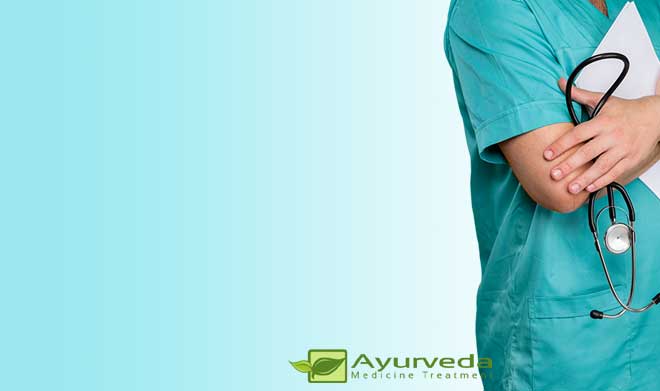
The typical characteristic of Leucoderma is the localised loss of skin pigmentation (natural colour of the skin).
It is necessary that Leucoderma is treated at the initial stages.
If the ailment attains an advanced stage, its cure becomes difficult.
Similarly, when aged persons suffer from Leucoderma, the treatment becomes a lengthy one.
When Leucoderma affects the mucous membrane or the skin joints, it assumes an acute state.
CHARACTERISTICS OF LEUCODERMA
At times, can also turn the affected skin patches reddish brown. Over these patches appear small eruptions.
This typical disease of the skin leaves white patches in the affected portions.
The patient experiences acute itching. He/she may also feel a burning sensation.
Scratching leads to the oozing out of pus or watery exudation.
The affected portions of the skin can also be disfigured permanently. Thus, the patient generally suffers from immense mental tension.
Besides, Leucoderma is a hereditary ailment.
Hence, prior to arranging any wedding, the parties should ensure that none of the to-be partners is suffering from Leucoderma as well as other hereditary ailments like diabetes, for instance.
LEPROSY VS KUSHTHA: MISCONCEPTIONS
This skin ailment – Leucoderma — is deemed a form of Kushtha. However, Kushtha is not to be misunderstood with leprosy
Leprosy is a contagious disease that damages the skin and nerves. But, Kushtha is not contagious. Kushtha refers to any type of obstinate ailment of the skin. Of course, it also includes leprosy. But, it does not necessarily mean leprosy. Therefore, contrary to common misconceptions Leucoderma is not leprosy!
CAUSES OF LEUCODERMA
According to Ayurvedic principles, Leucoderma is caused due to the malfunctioning of the liver. As a consequence thereof, it fails to produce the adequate amount of pitta (bile).
The chronic forms of indigestion and dysentery also cause Leucoderma.
DIETARY REGIMEN
Daily consume vegetables having a bitter taste like drumsticks, and bitter gourd.
WHAT NOT TO EAT
The patient must totally shun diet having salt. The medications work best when the patient stops taking salt.
However, if the patient fails to have meal without salt, then he/she can have rock-salt in very small quantities.
Also shun all forms of pungent and spicy food items.
OTHER IMPORTANT POINTS
Such people must retire early to bed at night. Sound and adequate sleep is mandatory for the patients. They must avoid burning the midnight oil.
The patient should not over-expose himself or herself to excessive cold or heat conditions.
AYURVEDIC TREATMENTS
Ayurveda first tackles chronic forms of constipation, indigestion and/or dysentery. It is only when all or any of these three abnormalities of the body are cured that Leucoderma can be dealt with permanently
Patients suffering from Leucoderma must cure constipation. Regular movement of bowels is essential for the purgation of the accumulated toxic substances within the body. The best Ayurvedic medication to ensure daily bowel movements is Triphala powder. (Please check the section on constipation cure).
Mentionably, constipation as well as Leucoderma is aggravated by psychic factors. Therefore, such patients must always stay away from situations that cause mental strain. They should always remain free from anxiety, worry and all forms of mental tension.
KATUKI
The laxatives and carminatives commonly recommended in this condition contain the primary ingredient Katuki.
Katuki corrects all impairment of the liver. Thus, Katuki stimulates this important bile secreting internal organ of the patient. In the process, the main cause of Leucoderma is tackled.
Katuki also contains copper in its bhasma (dust) form. Copper is ideal for synthesization of melanin pigments as well as for boosting metabolism.
TACKLING CHRONIC DYSENTERY OR INDIGESTION
For effectively tackling chronic dysentery or indigestion, the most effective Ayurvedic drugs are Gunja, Bakuci, Bhallataka, and Kutaja.
GUNJA
The medicated oil — Gunja — is prepared by boiling the ingredient that goes by the same name.
The patient suffering from Leucoderma must use this Gunja oil at least thrice daily over the affected and surrounding portions.
BAKUCI
Bakuci is commonly prescribed in both Allopathic and Ayurvedic schemes of treatments. Bakuci is manufactured from the seeds of Bakuci plant.
The Bakuci medication is a paste to be applied externally.
THE BAKUCI DECOCTION
The decoction is prepared with powder of Bakuci seeds mixed with the powdery forms of Amalaki and Khadira.
The Dose : The patient should consume half a teaspoon of this decoction twice daily.
BHALLATAKA
Bhallataka is a linctus form of medication. Bhallataka contains many other medicines as well.
The Dose : One teaspoonful twice daily. The patient must immediately drink a glass of milk after taking the medication.
Caution Note : Extra care must be taken while taking this medicine. This is primarily because the medicine at times has adverse effects on the patient. The patient may develop skin rashes, for instance.
However, the negative effects can be suitably arrested in the following manner.
Prior to taking this decoction, cover the inner mucous membrane with a coating of butter or ghee. The medicine must at not time come in direct contact with the membrane.
The skin rashes can be tackled in the following manner:
The patient should then consume the pulp of raw coconut. This natural and fresh food item neutralizes the toxic effects of the Bhallataka drug.
Mentionably, the patient must totally avoid hot and spicy food items while undergoing the treatment.
It is also important that the patient does not expose himself to heat or cold conditions.
KUTAJA
Kutaja is manufactured from the bark of Kutaja plant. This medicine is found in the powdery form.
The Dose : One teaspoonful thrice daily.

Leave a Reply